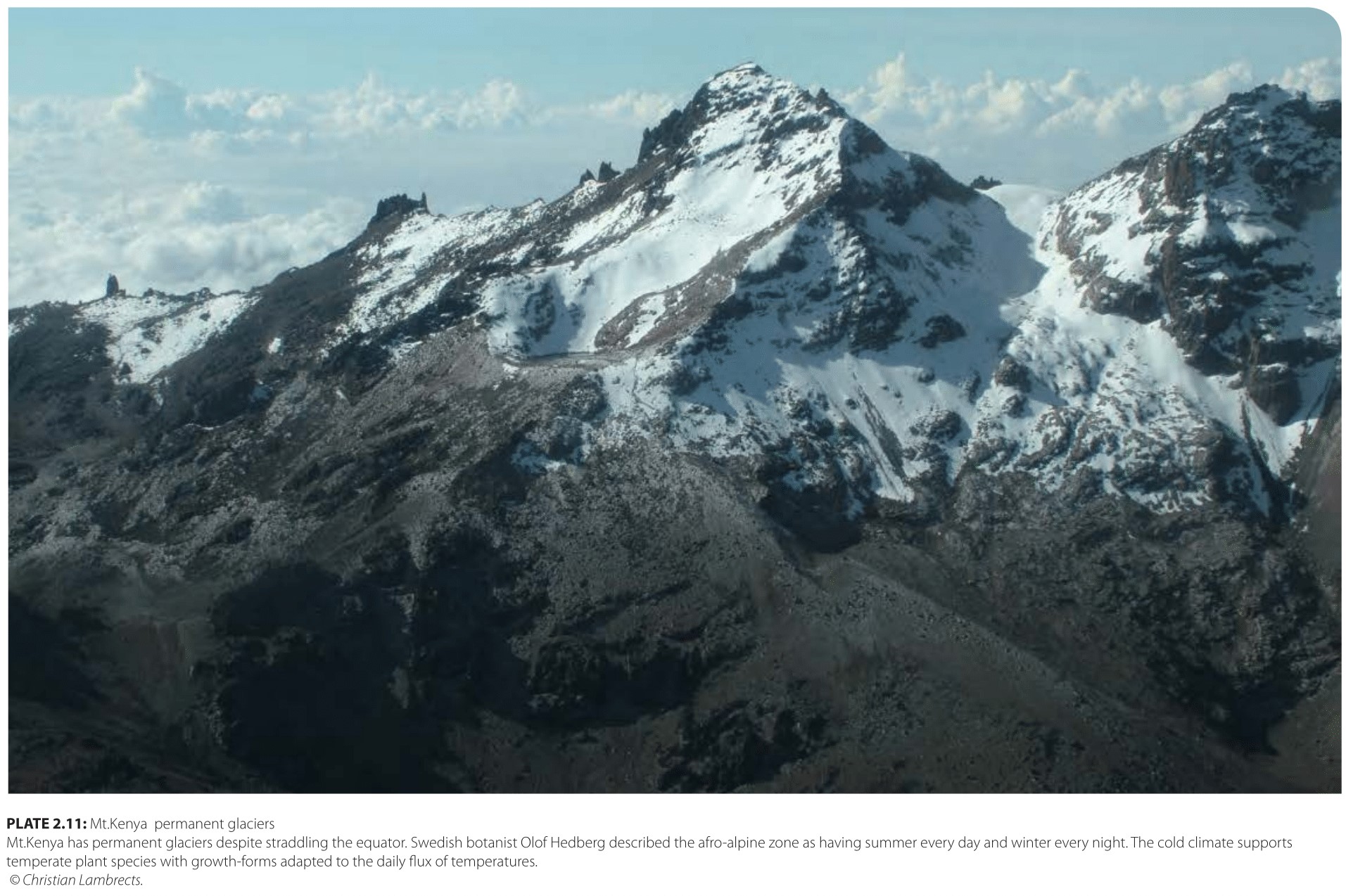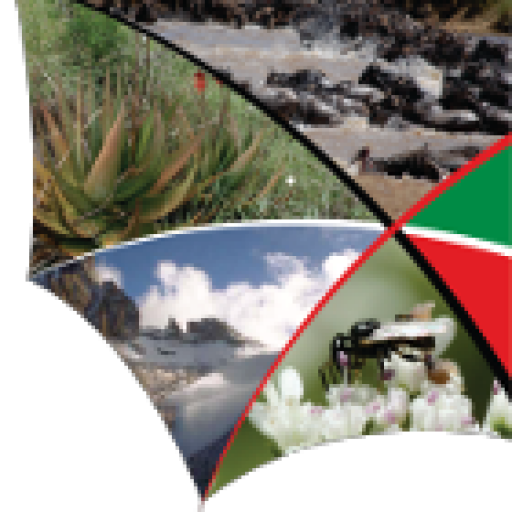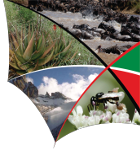Montane Ecosystem
Kenya’s mountains include some of the most dramatic scenery and important ecosystems in the country. Kenya’s largest mountains arise from volcanoes, uplift from faulting of the Rift Valley, hard igneous extrusions, and basement rock left emergent as the surrounding plains were worn out by erosion. The mountain landscape accounts for 10 per cent of Kenya’s land surface and varies in height from 1,500m to over 5,000m above sea level. These sky islands jut high above the plains and create their own climate, which becomes wetter and cooler with altitude until the afro-montane zone. The mountains also create a distinctive zonation of habitats, stratified by altitude
and varying with location. The habitats of Mt. Kenya and the Aberdares, for example, stretch from foothill grasslands, through woodlands and forest to the upper moorlands. The plant and animal life in the forests are a mix of equatorial and savannah species and, above the forest, a mix of tropical and temperate species. At high altitude the climate is cold and plant species are temperate in nature, though with rather different growth patterns and adaptations due to the year-round alternation of warm days and cold nights—or ‘summer every day and winter every night’, as Swedish
botanist Olof Hedberg described it. The relative isolation of Kenya’s montane ecosystems and extreme climate at higher altitude also explain the rich assemblage of endemic plant and animal species of montane ecosystems. The gradation of life-forms from base to peak of the sky islands makes them the most varied of all Kenya’s ecosystems. The windward side of montane ecosystems capture more rain and are considerably richer biologically than the leeward side.
and varying with location. The habitats of Mt. Kenya and the Aberdares, for example, stretch from foothill grasslands, through woodlands and forest to the upper moorlands. The plant and animal life in the forests are a mix of equatorial and savannah species and, above the forest, a mix of tropical and temperate species. At high altitude the climate is cold and plant species are temperate in nature, though with rather different growth patterns and adaptations due to the year-round alternation of warm days and cold nights—or ‘summer every day and winter every night’, as Swedish
botanist Olof Hedberg described it. The relative isolation of Kenya’s montane ecosystems and extreme climate at higher altitude also explain the rich assemblage of endemic plant and animal species of montane ecosystems. The gradation of life-forms from base to peak of the sky islands makes them the most varied of all Kenya’s ecosystems. The windward side of montane ecosystems capture more rain and are considerably richer biologically than the leeward side.
Montane ecosystems are among the most densely settled regions of Kenya. Traditionally the mountains supported a range of traditional herding and farming communities, honey-gatherers and hunter-foragers, all in close proximity and often trading commodities within and beyond the montane regions. The impact of heavy settlement, land conversion, resource extraction and fire has shrunk and modified montane ecosystems over the millennia, most significantly in the lower woodlands and forests. The density of people and diversity of livelihoods has increased with Kenya’s rapid population and economic activity since independence—further reducing and modifying montane habitats through intensified farming, resource extraction, timber and bamboo harvesting, commercial plantation forests, and illegal logging and hunting.



